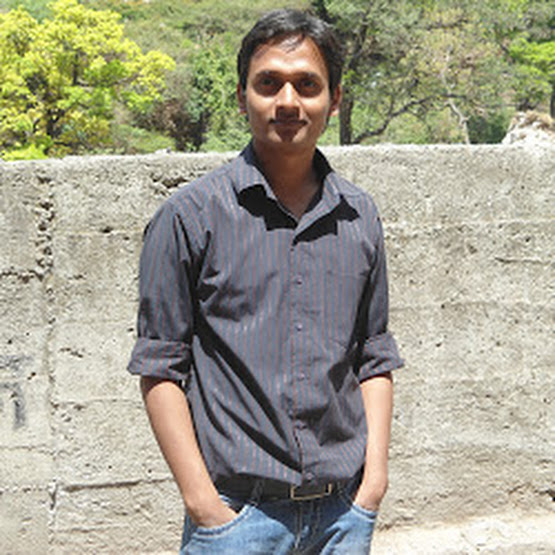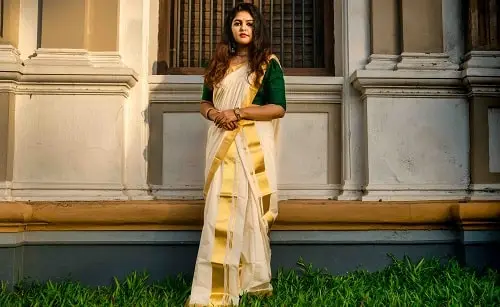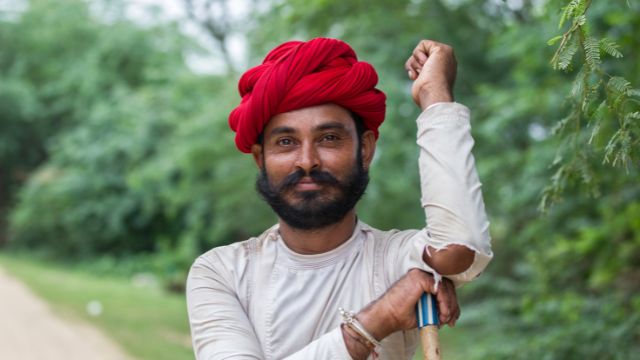Kerala, a state in southern India, is well known for its extensive cultural history and wide range of customs. Kerala’s traditional clothing, which emanates charm, elegance, and a strong connection to the area’s history, constitutes one of the most alluring elements of the state’s cultural tapestry.
The traditional clothing of Kerala, with its vivid colours and elaborate designs, has a particular place in the minds of both men and women as an expression of the artistic brilliance of the region. In this essay, let’s look into the distinctive characteristics and cultural importance of Kerala’s traditional attire for both men and women.
Traditional Dress of Kerala for Female
The “Mundum Neriyathum” or “Mundum Neryathum” is the name of the traditional women’s clothing of Kerala. The two pieces of clothing in this set were handcrafted from the finest cotton. The “Mundu,” or lower garment, is a simple white or cream-coloured cloth which hangs from the waist and reaches the ankles. The top garment, referred to as the “Neriyathu,” is worn like a shirt and frequently has lovely golden borders. The Mundum Neriyathum is a classic outfit that captures the elegance and simplicity of Keralan women.
The Mundum Neriyathum is frequently adorned with conventional designs and themes drawn from nature, including floral, leaf, and peacock motifs. The skill and craftsmanship of Kerala’s weavers are evident in the delicate weaving of these exquisite designs into the cloth. For many women within Kerala, the mundum neriyathum is a common item of clothing that they do every day in addition to wearing it on special occasions. It acts as a symbol of their cultural identity plus a confirmation of their natural grace.
Traditional Dress of Kerala for Male
- Men’s traditional clothing in Kerala is referred to as “Mundu” or “Dhoti.” The Mundu is a rectangular garment that is worn about the waist and reaches the ankles. It is often made of handwoven cotton. The Mundu often has a white or cream tint to represent purity and simplicity. It is paired with a “Mundu Shirt” or “Mundu Veshti,” a contrasting or matching shirt.
- The Mundu is a representation of Kerala’s distinctive cultural history in addition to being a traditional costume. It frequently goes with a “Mundu Jacket,” which is a waistcoat-like piece of clothing with elaborate embroidery or golden borders. The Mundu Shirt, Mundu, and Mundu Jacket when worn together produce a regal and aristocratic appearance appropriate for formal gatherings and festivals.
- The upper garment known as melmundu is worn over the shoulders to hide the upper portion of the body. Yet, due to the impact of Western culture on fashion, males are now wearing white shirts instead of melmundus.
The Cultural Significance
Kerala’s traditional clothing is of enormous cultural value and captures the spirit of the state’s heritage. In Kerala, these outfits are an essential component of religious ceremonies, weddings, festivals, and other festive occasions. They stand for the region’s cultural cohesion and represent the people’s shared identity.
Kerala’s traditional attire has great cultural importance and embodies the state’s history. These attires are a necessary part of religious rituals, nuptials, festivals, and other festive events in Kerala. They speak for the cultural unity of the area and symbolize the common identity of the populace.
The traditional attire of Kerala represents the strong ties that its people have to their heritage, whether it is worn for special occasions, weddings, or just as part of everyday life. The Mundum Neriyathum and Mundu are the epitome of grace, simplicity, and pride in one’s heritage. They enthral the viewer with their beauty and creativity as a visual reflection of Kerala’s abundant cultural tapestry.
A live example of the artistry and traditions which has been valued and upheld for ages, Keralan traditional attire is a lot more than threads and fabric. Kerala’s traditional clothing acts as a reminder of the area’s cultural past while the state strives to embrace modernity, encouraging a sense of pride and belonging within its citizens.
The traditional attire of Kerala shines out as an emblem of eternal elegance in an age of rapidly evolving fashion trends. It transcends generations and closes the gap between past times and the present day as a representation of the values, culture, and artistic excellence of the area.
Take a moment to admire the splendour and cultural importance of Kerala’s traditional clothing the next time you see a Mundum Neriyathum or a Mundu being draped with dignity. It is a mesmerizing synthesis of custom, creativity, and the tenacious spirit of Keralans.
Conclusion
Kerala’s rich cultural legacy and creative excellence are reflected in the traditional clothing worn by both men and women there. The Mundum Neriyathum for women as well as the Mundu for men are not merely clothes; they are elegant, traditional representations of Keralan identity. These clothing have endured the test of time thanks to their intricate weaving, brilliant colours, and magnificent designs, enthralling people with their appeal.

Santosh Kumar is an editor at unfoldstuffs.com and a professional content writer. With years of experience he is passionate for creating engaging, informative and impactful topics.










